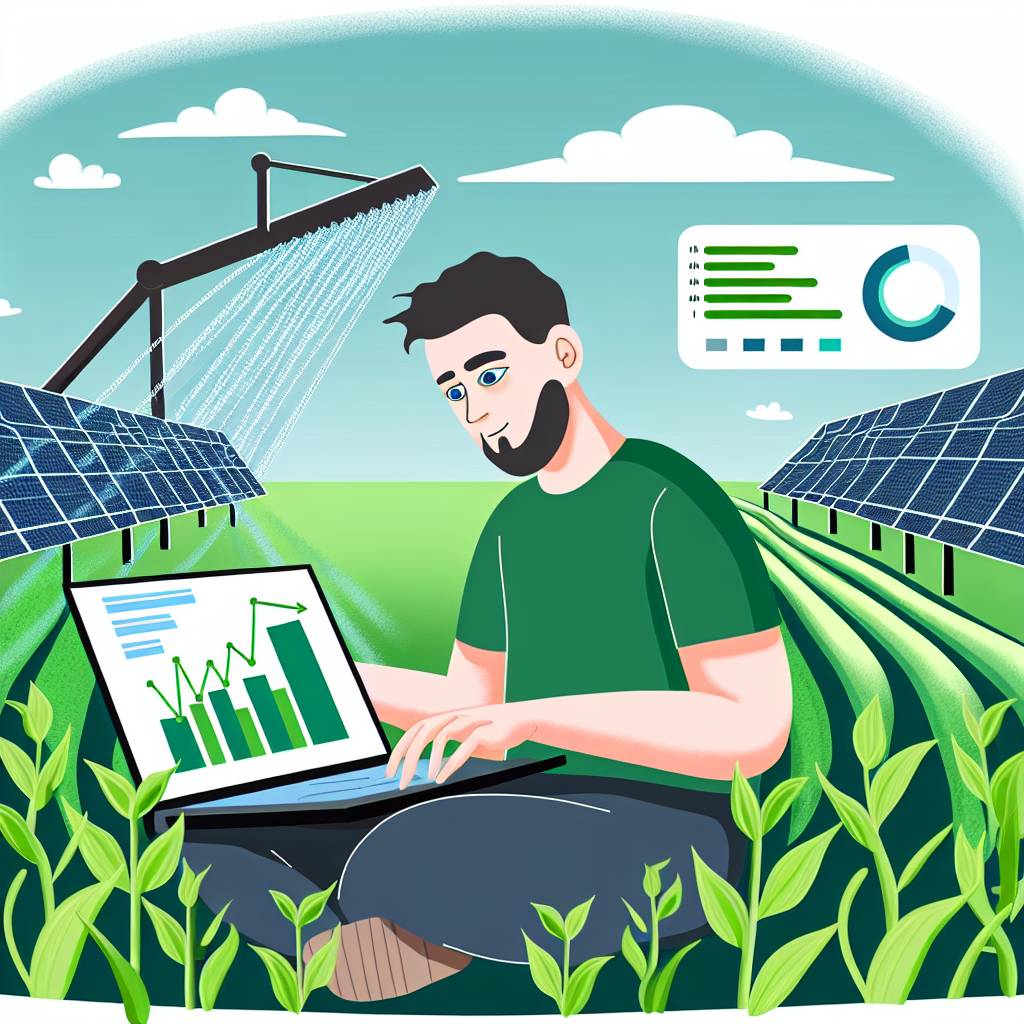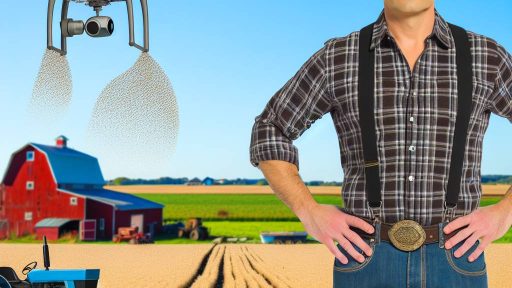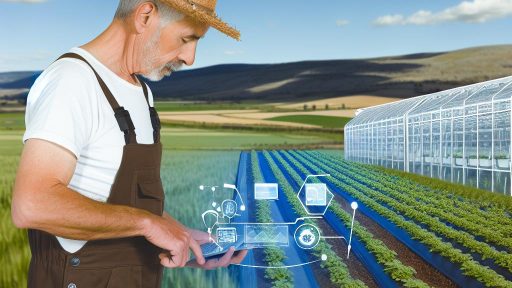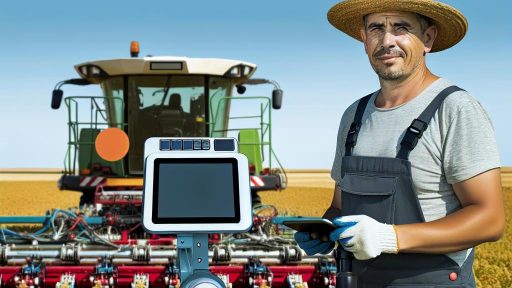Introduction to Precision Agriculture
Definition of Precision Agriculture
Precision agriculture refers to the management of farm variability in crops.
It uses information technology to ensure profitability, sustainability, and environmental protection.
This technique optimizes field-level management regarding crop farming practices.
Additionally, it relies on data obtained through various techniques and technologies.
These include GPS, IoT sensors, and remote sensing.
Importance of Precision Agriculture
Precision agriculture significantly enhances resource efficiency.
Farmers can better manage water, nutrients, and other inputs.
This leads to reduced waste and lower costs.
Moreover, it helps in cutting down the environmental impacts of farming.
Economic Benefits
The implementation of precision agriculture provides substantial economic benefits.
It leads to increased crop yields and overall farm productivity.
Farmers can make data-driven decisions, resulting in higher profits.
Furthermore, agricultural technology companies like AgLeader and Trimble support farmers in maximizing their investment.
Sustainability and Environmental Impact
Precision agriculture plays a crucial role in sustainable farming practices.
It minimizes chemical runoff and promotes soil health.
Transform Your Agribusiness
Unlock your farm's potential with expert advice tailored to your needs. Get actionable steps that drive real results.
Get StartedThis approach conserves water resources by targeting irrigation needs accurately.
Consequently, it helps in maintaining biodiversity within farming ecosystems.
Key Technologies in Precision Agriculture Software
Data Management Systems
Data management systems play a crucial role in precision agriculture.
These systems collect and analyze vast amounts of agricultural data.
Farmers can make informed decisions based on real-time insights.
Software solutions like Ag Leader and Trimble lead in this space.
They facilitate data integration from various sources, improving productivity.
Geospatial Technology
Geospatial technology utilizes GPS and satellite imaging.
This technology enhances mapping and monitoring capabilities.
As a result, farmers can identify crop health variations efficiently.
Applications like Google Earth Pro offer valuable mapping tools.
They allow for precise field analyses and resource allocation.
Variable Rate Technology
Variable rate technology (VRT) optimizes inputs across different field areas.
This approach minimizes waste and reduces input costs.
By applying fertilizers or pesticides where needed, farmers enhance efficiency.
Companies such as Raven and SoilOptix provide targeted solutions.
Farmers can achieve higher yields through VRT integrations.
Remote Sensing
Remote sensing involves the use of drones and satellite imagery.
This technology allows for continuous field monitoring.
Farmers can assess crop health, moisture levels, and nutrient needs.
Tools like DroneDeploy and AgEagle enhance remote analysis.
This proactive approach helps in taking timely corrective actions.
Machine Learning and AI
Machine learning and artificial intelligence are transforming agriculture.
These technologies analyze complex data sets for predictive insights.
Showcase Your Farming Business
Publish your professional farming services profile on our blog for a one-time fee of $200 and reach a dedicated audience of farmers and agribusiness owners.
Publish Your ProfileFarmers benefit from automated decision-making processes.
Companies like Climate Corporation use AI algorithms for precision farming.
These innovations improve productivity and sustainability.
How Precision Agriculture Software Enhances Data Collection
Real-Time Monitoring
Precision agriculture software allows farmers to monitor their fields in real-time.
This technology uses sensors to gather data about soil and crop conditions.
As a result, farmers can make immediate adjustments based on current data.
For instance, real-time moisture readings help optimize irrigation schedules.
Additionally, live data feeds enable quick damage assessments after severe weather.
Automated Data Collection
Automation in precision agriculture has transformed data collection processes.
Farmers can utilize drones and satellites to capture high-resolution images.
These tools provide insights into crop health over large areas.
Furthermore, data collection becomes more efficient and less labor-intensive.
This efficiency allows farmers to focus on decision-making and strategy.
Historical Data Analysis
Precision agriculture software integrates historical data with current observations.
Farmers can analyze trends from past seasons to inform present choices.
This analysis supports better decision-making based on proven outcomes.
For example, farmers can identify which crops perform well under specific conditions.
Ultimately, this knowledge enhances long-term planning and resource allocation.
Integration of Data Sources
Precision agriculture software seamlessly integrates various data sources.
Farmers can connect data from soil sensors, weather stations, and more.
This holistic approach provides a comprehensive view of farm conditions.
Consequently, farmers can identify patterns and correlations more easily.
Such insights lead to more informed agricultural practices and sustainability.
Discover More: Optimizing Farm Operations Through IoT Technologies
The Role of GIS and Remote Sensing in Farm Management
Understanding GIS Technology
Geographic Information Systems (GIS) play a crucial role in modern agriculture.
This technology helps farmers analyze and visualize spatial data effectively.
Moreover, GIS can track changes in soil health and crop productivity over time.
Farmers can utilize these insights to make informed decisions.
The Impact of Remote Sensing
Remote sensing remotely captures information about the earth’s surface.
This technology enables farmers to monitor crops without physical presence.
Consequently, remote sensing helps detect early signs of crop stress and disease.
Farmers can address issues promptly, preventing larger damages.
Combining GIS and Remote Sensing
The integration of GIS and remote sensing enhances farm management further.
Farmers can create detailed maps that reflect soil variability across fields.
In addition, these technologies facilitate precision agriculture practices.
For instance, farmers can apply fertilizers and water more efficiently.
Data-Driven Decisions for Sustainable Practices
Data from GIS and remote sensing allow for sustainable farming practices.
Farmers can optimize resource use while minimizing waste and environmental damage.
This approach contributes significantly to sustainable agriculture goals.
Furthermore, it enhances productivity without compromising ecological integrity.
Showcase Your Farming Business
Publish your professional farming services profile on our blog for a one-time fee of $200 and reach a dedicated audience of farmers and agribusiness owners.
Publish Your ProfileFuture Trends in GIS and Remote Sensing
The future of agriculture will heavily rely on advancements in these technologies.
Emerging technologies, such as drones and IoT devices, will augment capabilities.
As a result, farmers will gain even more precise control over their operations.
This evolution promises to improve farm efficiency and sustainability significantly.
Gain More Insights: Implementing AI And Machine Learning In Crop Disease Detection Systems
Case Studies: Successful Implementation of Precision Agriculture
Agricultural Innovations at Green Valley Farms
Green Valley Farms adopted precision agriculture techniques in 2021.
They utilized drones equipped with sensors and cameras.
This technology mapped the moisture levels across their fields.
The results showed significant improvements in water usage efficiency.
Additionally, they reduced input costs by 15% in their first year.
Farmers reported healthier crops with better yield rates.
Furthermore, the innovative methods attracted media attention and local awards.
Crop Monitoring by Bright AgriTech
Bright AgriTech implemented precision monitoring across their 3,000 acres in 2022.
Using satellite imagery, they analyzed crop health in real time.
This allowed them to apply fertilizers more effectively.
Consequently, they minimized chemical runoff into local water systems.
They increased their overall crop yield by 20% compared to previous seasons.
Moreover, Bright AgriTech achieved better pest management practices.
Farmers now rely on detailed analytics for decision-making.
Holistic Approach at Sunny Fields Organic Farm
They adopted precision irrigation systems in 2023.
This system ensured optimal water delivery to each plant.
As a result, water consumption decreased by 30% while maintaining yield.
The farm also utilized soil sensors to monitor nutrient levels.
Data-driven insights helped them plan crop rotations more effectively.
Sunny Fields reported improved soil health and biodiversity over time.
Case Study: Harvest Tech Solutions
Harvest Tech Solutions partnered with local farmers in 2023.
The company provided software that analyzed historical yield data.
Farmers accessed tailored recommendations on planting schedules.
This software also predicted the best times for harvesting.
Farmers experienced an increase in profits from better planning.
Additionally, the software supported minimal pesticide use.
Overall, this collaboration resulted in higher efficiency and sustainability.
Discover More: Cost-Effective Farm Management Software Options For Small Farms

Sustainability Metrics Supported by Precision Agriculture Software
Improved Resource Efficiency
Precision agriculture software enhances resource efficiency on farms.
Farmers can use data to optimize water usage and reduce waste.
As a result, crops receive the precise amount of nutrients needed.
This method minimizes excess runoff and conserves resources.
Soil Health Monitoring
Monitoring soil health is crucial for sustainable farming.
Precision software tracks soil composition and moisture levels.
Showcase Your Farming Business
Publish your professional farming services profile on our blog for a one-time fee of $200 and reach a dedicated audience of farmers and agribusiness owners.
Publish Your ProfileThis information helps farmers make informed planting decisions.
Healthy soil supports strong crop growth and reduces erosion.
Crop Yield Analysis
Understanding crop yield is essential for sustainable practices.
Precision agriculture software provides detailed yield mapping.
This data allows farmers to identify areas needing attention.
Consequently, they can implement targeted improvements for better yields.
Pest and Disease Management
Effective pest management contributes to sustainable agriculture.
Precision agriculture software helps detect pests early.
Farmers can respond quickly before infestations spread.
This proactive approach minimizes pesticide use and promotes safety.
Carbon Footprint Tracking
Tracking carbon emissions is fundamental to sustainability metrics.
Precision agriculture software monitors inputs and outputs.
This feature helps farmers understand their carbon footprint.
Hence, they can implement strategies to reduce emissions.
Data-Driven Decision Making
Data-driven decisions lead to more effective farm management.
Precision agriculture software provides actionable insights and analytics.
Farmers can adapt practices based on real-time data observations.
This responsiveness fosters sustainability in agricultural operations.
Discover More: The Future Of Farming Trends In Automated Machinery
Challenges and Limitations of Precision Agriculture Tools
High Initial Costs
Implementing precision agriculture tools often requires a substantial investment.
Farmers may struggle to cover these high initial costs.
Furthermore, advanced technology can be financially inaccessible for small-scale farmers.
As a result, they might miss out on potential benefits.
Complexity of Technology
The technology associated with precision agriculture can be complex.
Farmers need training to effectively use these tools.
Additionally, ongoing support is often necessary to troubleshoot issues.
This complexity can deter some farmers from adopting the technology.
Data Management Challenges
Precision agriculture generates vast amounts of data.
Farmers may find it challenging to analyze and utilize this data effectively.
Moreover, many lack the necessary software tools for efficient data management.
This often leads to underutilization of valuable insights.
Variable Accessibility
Access to precision agriculture tools varies widely in different regions.
Remote areas may experience limited access to technology and support.
This disparity creates a gap between technologically advanced and disadvantaged farmers.
Dependence on Weather Conditions
Precision agriculture tools rely heavily on accurate weather data.
Unexpected weather events can disrupt planned agricultural processes.
Farmers must remain adaptable to these unpredictable conditions.
Ultimately, this reliance can undermine the benefits of precision techniques.
Future Trends in Precision Agriculture and Sustainable Practices
Adoption of Advanced Technologies
Farmers increasingly embrace advanced technologies in precision agriculture.
These technologies include drones, IoT devices, and AI algorithms.
Showcase Your Farming Business
Publish your professional farming services profile on our blog for a one-time fee of $200 and reach a dedicated audience of farmers and agribusiness owners.
Publish Your ProfileThey allow for real-time data analysis on crop performance.
Moreover, they enhance decision-making regarding resource allocation.
Integration of Artificial Intelligence
Artificial intelligence plays a crucial role in optimizing farm management.
AI systems analyze vast datasets to identify patterns and trends.
This analysis helps farmers predict yields more accurately.
Additionally, AI aids in pest detection and disease management.
Sustainable Resource Management
Farmers are focusing on sustainable resource management practices.
This approach minimizes waste and maximizes productivity.
Techniques such as crop rotation and cover cropping are on the rise.
These practices not only enhance soil health but also reduce runoff.
Data-Driven Decision Making
Data-driven decision making is transforming how farmers operate.
Farmers utilize software platforms to analyze historical data.
They make informed choices based on weather forecasts and soil conditions.
This strategy increases efficiency and reduces costs.
Collaboration and Knowledge Sharing
Collaboration among farmers is becoming increasingly vital.
Farmers share insights and experiences through community platforms.
This exchange fosters innovation and best practices in agriculture.
Furthermore, educational resources support the adoption of new technologies.
Government Policy and Support
Governments are implementing policies that encourage sustainable practices.
They provide financial incentives for adopting precision agriculture tools.
Additionally, policies promote research and development in agri-tech.
Such support helps farmers transition to sustainable farming methods.




